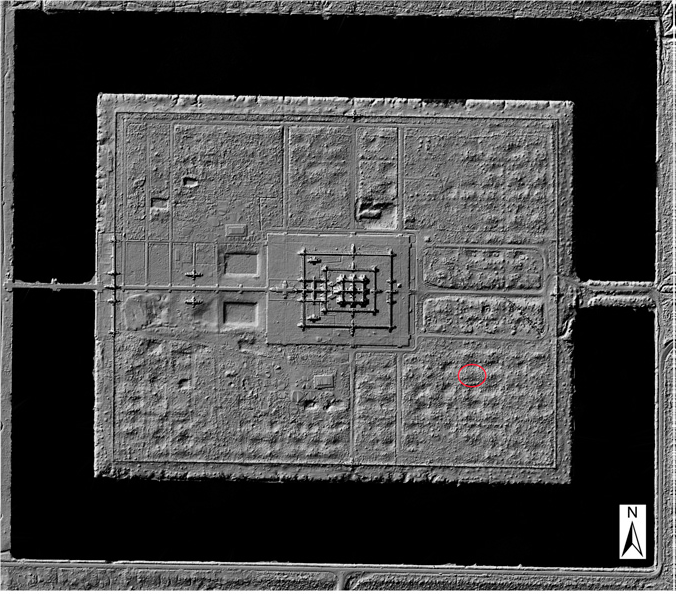Temple Occupation and The Tempo of Collapse at Angkor Wat
by Miriam T. Stark & Piphal Heng & Alison K. Carter
Ground occupation and industrial activity as indicators for the timing of the decline and fall of Angkor as a regional center of power.

- Publication
- PNAS (Proceedings of the National Academy of Sciences (PNAS), 31 Apr. 2019
- Published
- 2019
- Authors
- Miriam T. Stark, Piphal Heng & Alison K. Carter
- Pages
- 6
- Language
- English
pdf 1.3 MB
What really happened during the 14th and 15th centuries to the capital city of the Khmer Empire have been widely studied. However, new findings thanks to excavations and Lidar campaigns help us to fine-tune some of the historic speculations regarding the decline and fall of Angkor.’
Among the remarks formulated by the authors of this deeply-documented study, we shall retain:
“A decline in temple construction activities coincided with other internal and external developments, notably the regionwide adoption of Theravada Buddhism. This ideological shift moved emphasis from state-sponsored stone temples with their associated bureaucracy to community-based Buddhist pagodas, disrupting preexisting Hindu-based power structures at Angkor. Zhou Daguan notes Theravada Buddhist monks in Angkor in 1296 CE, and royal support for Theravada Buddhism, is also seen in a 1308 CE inscription by King Srindravarmadeva (K.754) in Pali.
“At the same time, the importance of maritime trade with China was growing during the late 14th century; historic documents record a greater number of contacts between Cambodia and China during 1371 – 1419 than in any other period. Angkor, situated far inland, was not as well-positioned to participate in international maritime trade as the post-Angkorian cities located further south. The increasing economic opportunities with China may have exerted a pull out of Angkor and a reorganization of the preexisting socioeconomic power structures. Angkorian stoneware ceramic production also appears to have changed during this period, moving from the central core region to kiln locations along the eastern edge of the provinces and in Northeast Thailand.
“Lastly, regionwide environmental studies have aided in reconstructing the climate of early second millennium CE mainland Southeast Asia, pointing toward a period of climatic instability that had far-reaching effects on multiple polities in the area. Southeast Asia’s monsoonal climate involves annual cycles of rainy and dry seasons. While Angkor and other regional states grew during a period of favorable climatic conditions, hydroclimate data suggest two regionwide droughts that occurred during the decline of Angkor and other regional powers: Angkor Drought I (1345 – 1374 CE) and Angkor Drought II (1401 – 1425 CE).”
Authors: Alison K. Carter (Department of Anthropology, University of Oregon), Miriam T. Stark, Seth Quintus and Piphal Heng (Department of Anthropology, The University of Hawai’i at Manoa, Honolulu), Yijie Zhuang (Institute of Archaeology, University College London), Hong Wang (State Key Laboratory of Loess and Quaternary Geology, Institute of Earth Environment, Chinese Academy of Sciences, Xian), and Rachna Chhaye (International Center of Research and Documentation of Angkor, Authority for the Protection and Management of Angkor and the Region of Siem Reap, Siem Reap).
Photo: Formal grid system across Angkor Wat enclosure. Digital terrain image courtesy of Khmer Archaeology Lidar Consortium.
Tags: decline and fall, Khmer Empire, ceramics, datation, lidar, maritime trade
About the Authors

Miriam T. Stark
Professor Miriam T. Stark has worked in Southeast Asian archaeology since 1987 and currently directs field-based archaeological research programs in Cambodia that focus on political economy and state formation.
She is a co-director of the Lower Mekong Archaeological Project and a co-investigator with the Greater Angkor Project and the Khmer Production and Exchange Project.
Since 1995, she has taught in the Department of Anthropology at the University of Hawai’i at Manoa, with specialties in East and Southeast Asian Archaeology and Archaeological Method and Theory.
She also lectured on the AIA’s national circuit Cultural Heritage Policy Committee (2013 – 16 term), focusing on ancient trade networks that linked Southeast Asia to the rest of the Old World, and the origins of Southeast Asian civilizations, with a particular focus on the rise of the Khmer Empire.

Piphal Heng
Heng Piphal is a Cambodian archaeologist, currently a postdoctoral scholar at UCLA-Cotsen Institute of Archaeology.
After receiving his degree in archaeology from the Cambodia’s Royal University of Fine Arts in 2002, and a MA and PhD degree in Anthropology from the University of Hawai‘i at Mānoa in 2018, Heng Piphal was a ACLS-Robert H. N. Ho postdoctoral fellow at the Center for Southeast Asian Studies & Department of Anthropology, Northern Illinois University from 2019 to 2021.
His resarchthemes include religious change, urbanism, settlement patterns, political economy, and sociopolitical organizational shift, as well as the intersection between heritage management, collaborative/public archaeology, knowledge production, and urban development.
His current project explores the transformation of urban and rural settlements in response to the demographic and political changes that took place with the adoption of Theravada Buddhism in Angkor (14th-18th century Cambodia).

Alison K. Carter
An Assistant Professor in the Department of Anthropology at the University of Oregon, USA, Alison Kyra Carter researches the political economy and evolution of complex societies in Southeast Asia. Other research interests include the archaeology of East and South Asia, materials analysis and LA‐ICP‐MS, craft technology and specialization, household archaeology, ritual and religion, trade and exchange, and bead studies.
Alison Carter is currently Principal Investigator and Project Co-Director (with Miriam T. Stark) of P’teah Cambodia, an archaeological investigation of Pre-Angkorian, Angkorian, and Post-Angkorian residential spaces in Battambang Province. The project started in May-June 2018 with excavations near Prasat Baset Temple (see project website).

